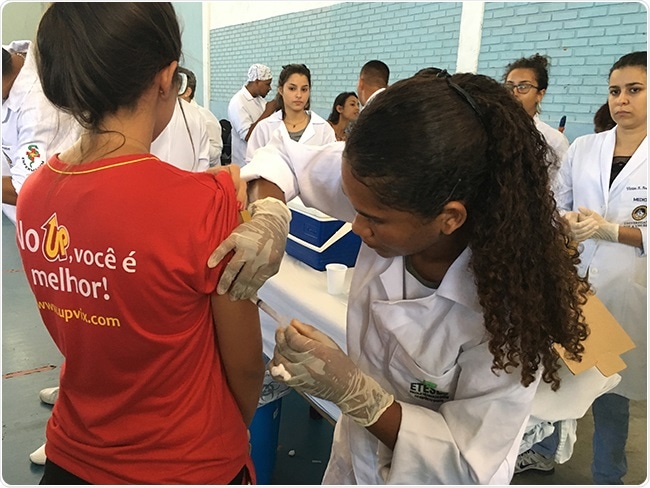Apr 3 2017
In response to the yellow fever outbreak currently on-going in Brazil some 3.5 million doses of vaccine from the emergency stockpile were deployed to the country through the International Coordinating Group (ICG) on Vaccine Provision for yellow fever. The ICG oversees a continuously replenished emergency stockpile of 6 million doses of yellow fever vaccine. The ICG includes four agencies: the World Health Organization (WHO), United Nations Children’s Fund (UNICEF,) the International Federation of Red Cross and Red Crescent Societies (IFRC), and Médecins Sans Frontières (MSF). The Government of Brazil will reimburse the cost of the 3.5 million doses sent through the yellow fever emergency stockpile financed by Gavi Alliance.

Vaccination campaigns against yellow fever are currently ongoing in Brazil. WHO/A. Costa
The government of Brazil with the support of PAHO/WHO is working to ensure protection of its population and preventing further spread of the yellow fever virus which is transmitted to humans via mosquitoes. Brazil is carrying out vaccination campaigns for yellow fever in several states, while strengthening surveillance and case management throughout the country since the outbreak began in January 2017. More than 18.8 million doses of vaccine have been distributed. PAHO/WHO has mobilized more than 15 experts through the Global Outbreak Alert and Response Network (GOARN), including US CDC, to provide specialized technical support to the federal authorities managing the outbreak. On 14th March 2017, Brazilian authorities formally requested the ICG for 3.5 million doses of yellow fever vaccine which arrived in Rio de Janeiro on 24 March to be used for vaccination campaigns in the states where outbreaks have been reported. Distribution plans are being updated as the situation evolves .
WHO is also supporting other yellow fever endemic countries through the Eliminating Yellow Fever Epidemics (EYE) Strategy. Implementation of the global strategy which is jointly governed by WHO, UNICEF and GAVI, ensures support to countries to respond to an increased risk of urban outbreaks of yellow fever with international spread. The strategy aims at protecting at-risk populations, preventing international spread and containing outbreaks rapidly. The most vulnerable countries and regions are prioritized and global risk is mitigated by building resilience in urban centres and preparedness in areas with potential for outbreaks. The EYE strategy aims to ensure reliable vaccine supply with a global coalition of partners to predict needs and shape vaccine production.
During 2016 some 30 million doses of yellow fever vaccine from WHO’s emergency vaccine stockpile were deployed to the Democratic Republic of Congo and Angola during the 2016 yellow fever outbreaks in those countries.
Source: http://www.who.int/csr/disease/yellowfev/vaccination-in-Brazil/en/